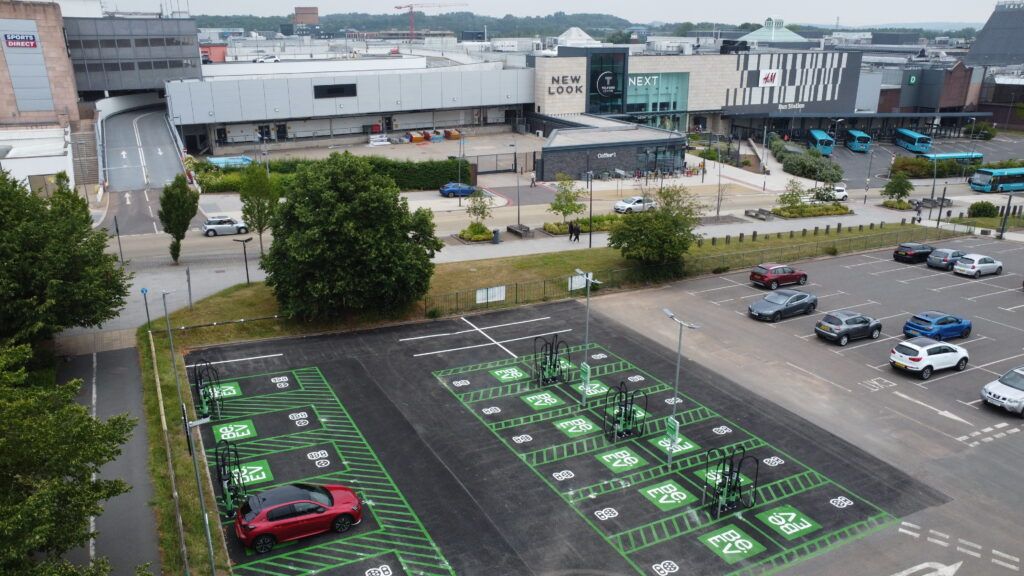First-ever vision to kick start world-leading hydrogen economy set to support over 9,000 UK jobs and unlock £4 billion investment by 2030.
The UK’s first-ever Hydrogen Strategy drives forward the commitments laid out in the Prime Minister’s ambitious 10 Point Plan for a green industrial revolution by setting the foundation for how the UK government will work with industry to meet its ambition for 5GW of low carbon hydrogen production capacity by 2030 – which could replace natural gas in powering around three million UK homes each year as well as powering transport and businesses, particularly heavy industry.
A booming, UK-wide hydrogen economy could be worth £900 million and create over 9,000 high-quality jobs by 2030, potentially rising to 100,000 jobs and worth up to £13 billion by 2050. By 2030, hydrogen could play an important role in decarbonising polluting, energy-intensive industries like chemicals, oil refineries, power and heavy transport like shipping, HGV lorries and trains, by helping these sectors move away from fossil fuels. Low-carbon hydrogen provides opportunities for UK companies and workers across our industrial heartlands.
With government analysis suggesting that 20-35% of the UK’s energy consumption by 2050 could be hydrogen-based, this new energy source could be critical to meet our targets of net zero emissions by 2050 and cutting emissions by 78% by 2035 – a view shared by the UK’s independent Climate Change Committee.
In the UK, a low-carbon hydrogen economy could deliver emissions savings equivalent to the carbon captured by 700 million trees by 2032 and is a key pillar of capitalising on cleaner energy sources as the UK moves away from fossil fuels.
Business & Energy Secretary, Kwasi Kwarteng, said: “Today marks the start of the UK’s hydrogen revolution. This home-grown clean energy source has the potential to transform the way we power our lives and will be essential to tackling climate change and reaching Net Zero.
“With the potential to provide a third of the UK’s energy in the future, our strategy positions the UK as first in the global race to ramp up hydrogen technology and seize the thousands of jobs and private investment that come with it.”
Energy & Climate Change Minister, Anne-Marie Trevelyan, said: “Today’s Hydrogen Strategy sends a strong signal globally that we are committed to building a thriving low carbon hydrogen economy that could deliver hundreds of thousands of high-quality green jobs, helps millions of homes transition to green energy, support our key industrial heartlands to move away from fossil fuels and bring in significant investment.”
The government’s approach is based on the UK’s previous success with offshore wind, where early government action coupled with strong private sector backing has earned the UK a world leading status. One of the main tools used by government to support the establishment of offshore wind in the UK was the Contracts for Difference (CfD) scheme, which incentivises investment in renewable energy by providing developers with direct protection from volatile wholesale prices and protects consumers from paying increased support costs when electricity prices are high.
As such, the government has today launched a public consultation on a preferred hydrogen business model which, built on a similar premise to the offshore wind CfDs, is designed to overcome the cost gap between low carbon hydrogen and fossil fuels, helping the costs of low-carbon alternatives to fall quickly, as hydrogen comes to play an increasing role in our lives. Alongside this, the government is consulting on the design of the £240 million Net Zero Hydrogen Fund, which aims to support the commercial deployment of new low carbon hydrogen production plants across the UK.
Other measures included in the UK’s first-ever Hydrogen Strategy include:
- outlining a ‘twin track’ approach to supporting multiple technologies including ‘green’ electrolytic and ‘blue’ carbon capture-enabled hydrogen production, and committing to providing further detail in 2022 on the government’s production strategy
- collaborating with industry to develop a UK standard for low carbon hydrogen giving certainty to producers and users that the hydrogen the UK produces is consistent with net zero while supporting the deployment of hydrogen across the country
- undertaking a review to support the development of the necessary network and storage infrastructure to underpin a thriving hydrogen sector
- working with industry to assess the safety, technical feasibility, and cost effectiveness of mixing 20% hydrogen into the existing gas supply. Doing so could deliver a 7% emissions reduction on natural gas
- launching a hydrogen sector development action plan in early 2022 setting out how the government will support companies to secure supply chain opportunities, skills and jobs in hydrogen.
CEO of ITM Power, Dr Graham Cooley, said: “By supporting the creation of a UK home market, today’s announcement is a very welcome step in helping British companies cement their positions as world leaders in hydrogen technology. The industry needs a policy landscape in place that identifies priorities and support mechanisms for rolling out green hydrogen production in the UK and that’s just what today’s Hydrogen Strategy sets out.
“Green, zero-carbon hydrogen can abate greenhouse gas emissions from industry, transport and heat. It can be used to store our abundant renewable energy from offshore wind and longer term, be used to create export markets. This is a win for the UK’s decarbonisation plans, a win for cleaner air and a win for British jobs.”
Hydrogen Director at National Grid, Antony Green, said: “The transition to a green economy will require a mix of technologies and hydrogen will play a vital role. This strategy signals the UK’s commitment to hydrogen and provides the certainty needed to boost consumer and investor confidence and support commercial solutions. Importantly, unlocking the potential of hydrogen as a clean energy solution requires significant pace and innovation to scale up production, and the guidance from government today will be key to triggering the investment and buy-in needed to achieve this.”
Chief Policy Director at CBI Matthew Fell, said: “With hydrogen key to unlocking decarbonisation across carbon-intensive sectors, as well as stimulating high levels of skilled green jobs, the government’s Hydrogen Strategy is a key milestone in the delivery of the UK’s 10 Point Plan.
“As a leader in high skilled manufacturing, and with an extensive legacy in energy production, the UK stands perfectly positioned to capitalise on the opportunities provided by hydrogen.
“As the countdown to COP26 continues, hydrogen is an area where the UK can lead by example on the global stage, showcasing the value of strong partnerships between government and the private sector on the road to reducing emissions.”
Chief Executive at SSE, Alistair Phillips-Davies, said: “We strongly welcome the publication of this first-ever Hydrogen Strategy and hope to turn this encouraging strategy into firm and rapid action through our exciting plans. These include working with Equinor on the world’s first major hydrogen-fired power station at Keadby and developing hydrogen storage caverns at Aldbrough, as well as our partnership with Siemens to co-locate hydrogen production facilities at our wind farms. The strategy is a welcome first step to realising the potential of hydrogen.”
Prioritising and supporting polluting industries to significantly slash their emissions, the government also announced today a £105 million funding package through its Net Zero Innovation Portfolio that will act as a first step to build up Britain’s low carbon hydrogen economy. The investment will help industries to develop low carbon alternatives for industrial fuels, including hydrogen, which will be key to meeting climate commitments.
This includes:
- £55 million Industrial Fuel Switching Competition. Funding will support the development and trials of solutions to switch industry from high to low carbon fuels such as natural gas to clean hydrogen, helping industry reach net zero by 2050
- £40 million Red Diesel Replacement Competition. Providing grant funding for the development and demonstration of low carbon alternatives to diesel for the construction, quarrying and mining sectors, with the aim of decarbonising these industries reliant on red diesel, a fuel used mainly for off-road purposes such as in bulldozers. With red diesel responsible for the production of nearly 14 million tonnes of carbon each year, the investment supports the UK government’s budget announcement removing the entitlement to use red diesel and rebated biodiesel
- £10 million Industrial Energy Efficiency Accelerator (IEEA). Offering funding to clean technology developers to work with industrial sites to install, test and prove solutions for reducing UK industry’s energy and resource consumption.
This comes as the Transport Secretary unveils the winners of a £2.5 million R&D competition for hydrogen transport pilots in the Tees Valley area, which will lead to supermarkets, emergency services and delivery companies trialling hydrogen-powered transport to move goods and carry out local services.
Associate Director for the Carbon Trust, Paul Huggins, said: “The previous rounds of the Industrial Energy Efficiency Accelerator have seen over £8 million of funding awarded to 16 successful projects. The programme has been instrumental in securing the first industrial demonstration of a wide range of innovative technologies, with the future potential to deliver up to 10 million tonnes of cumulative carbon savings over 10 years.
“Seeing these technologies working at scale on site will reduce the barriers to widespread industry adoption of energy saving technologies. We are delighted that BEIS has re-appointed the Carbon Trust and our partners, Jacobs and KTN, to deliver the next round of the IEEA and look forward to supporting the next wave of demonstration projects and further contributing to UK’s industry transition toward net zero.”
Hydrogen can be made as safe as natural gas. As the hydrogen economy develops, all necessary assessments will be carried out and measures put in place to ensure that hydrogen is stored, distributed and used in a safe way.
The UK government is already working with the Health and Safety Executive and energy regulator Ofgem to support industry to conduct first-of-a-kind hydrogen heating trials. These trials along with the results of a wider research and development testing programme will inform a UK government decision in 2026 on the role of hydrogen in decarbonising heat. If a positive case is established, by 2035 hydrogen could be playing a significant role in heating people’s homes and businesses, powering cars, cookers, boilers and more – helping to slash carbon emissions from the UK’s heating system and tackle climate change.
Director of Policy at the Association for Renewable Energy and Clean Technology (REA), Frank Gordon, said: “This Strategy provides welcome clarity. The REA urged the government to provide certainty for investors, deliver a technology neutral approach and highlight the range of low carbon pathways. The Hydrogen Strategy starts to answer those calls and offers a positive vision for the role of hydrogen in meeting the UK’s net zero ambitions.
“Backed up by the Net Zero Hydrogen Fund, a revenue support scheme for hydrogen production and a standard methodology to define when hydrogen is low carbon, we believe this Strategy can provide a stimulus for British-based hydrogen production over the coming years.”
Chief Executive of Energy UK, Emma Pinchbeck, said: “Hydrogen and CCUS are going to be incredibly valuable for sectors that will be difficult to decarbonise with electricity – and so we welcome that today’s Hydrogen Strategy takes an economy-wide approach to developing these innovative technologies. The UK has real potential for hydrogen and CCUS, both of which can deliver new skilled jobs, particularly in places where the UK already has a proud industrial and energy heritage.”
Executive Director at the Aldersgate Group, Nick Molho, said: “We welcome the consultation on business models to make large-scale low carbon hydrogen production commercially viable and the commitment to develop a robust standard to ensure UK hydrogen production is consistent with the net zero target.
“Low carbon hydrogen has a crucial role to play in cutting emissions in complex sectors of the economy, such as long-range road transport and heavy industry in both clustered and dispersed sites. The key to ramping up production and cutting the cost of low carbon hydrogen – including the scaling up of green electrolysis capacity – will be to combine meaningful demonstration projects in sectors such as steel and investment in skills, with rapid clarity on the market mechanisms industry can rely on to make a predictable return on investment.”
The Hydrogen Strategy is one of a series of strategies the UK government is publishing ahead of the UN Climate Summit COP26 taking place in Glasgow this November. The UK government has already published its Industrial Decarbonisation Strategy, Transport Decarbonisation Strategy and North Sea Transition Deal, while its Heat and Buildings and Net Zero Strategies will be published this year.
Responding to the Hydrogen Strategy, David Smith, Chief Executive at Energy Networks Association which represents the UK and Ireland’s energy networks businesses, said: “This is a much needed and welcome first step for the development of the UK’s hydrogen economy. It puts in place the right pieces for Britain’s energy networks to act as the platform on which the UK’s hydrogen ambitions will be built, recognising the importance of hydrogen blending and investing in innovation.
“We need further recognition that for hydrogen to play its part in Net Zero, producing 5GW of hydrogen by 2030 will not be enough. We must set our sights higher, towards a figure twice that amount.”
Image: Shutterstock














